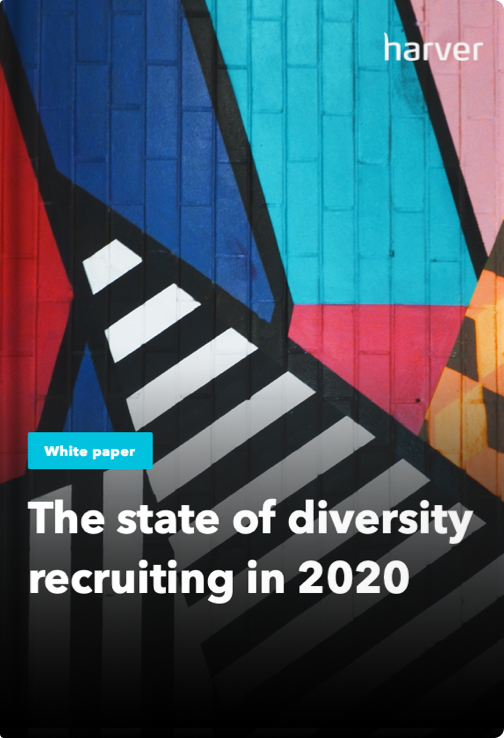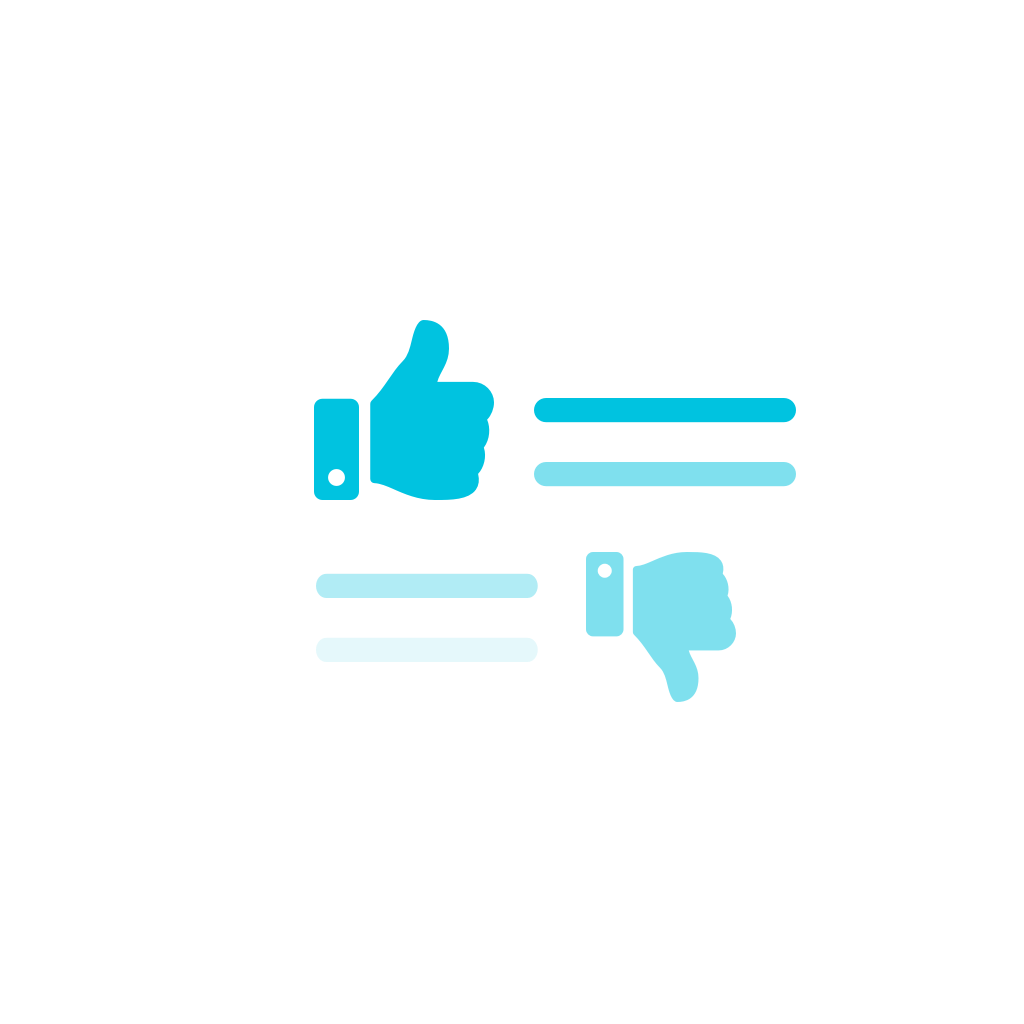When recruiting new employees you want to hire the best person for the job, that goes without saying. As well as having a recruiting process that helps you attract and select the top candidates, you also need to ensure fair hiring practices that are legal and consistent with local and labor laws.
But keeping your hiring practices legal and above board shouldn’t be the only motivator for you to maintain fair hiring. You should do it because it is the right thing to do to level the playing field for all your applicants, giving everybody a fair chance regardless of their background, gender, race, ethnicity, religion, sexual orientation, age, disability, and so on.
So what can you do to ensure fair hiring practices at your organization?
What’s in?
1. Write inclusive job ads
We can, unknowingly, allow gender-coded language to seep into job ads. And intentionally or not, this gender-biased job description can then turn certain candidates off.
Ensure fair hiring practices at your organization by using inclusive language in your job ads and by avoiding subtle bias. Use tools like Gender Decoder to help you write inclusive job ads. In your job ad, make sure to include your EEO (Equal Employment Opportunity) statement.
If you aren’t sure what unconscious bias/gender-coded language in job descriptions looks like, here are a few examples:
- Use the title ‘person’ instead of ‘man’, i.e. salesperson rather than salesman.
- Instead of referring to your team as ‘the guys’, call them ‘folks’ or ‘people’ or simply, ‘the team’ to keep it gender-neutral.
- Switch out ‘maternity’ for ‘parenthood’ – raising children isn’t the responsibility of just women.
- Be aware of words with masculine and feminine connotations. For example, words like strong, drive, or analytical are more associated with males while support, share, or understand with females. Look for neutral alternatives to include in your job posts.
Also, look out for other forms of unconscious bias in your job ads, e.g. related to age, race, disability, or elitism. Check out for examples here.
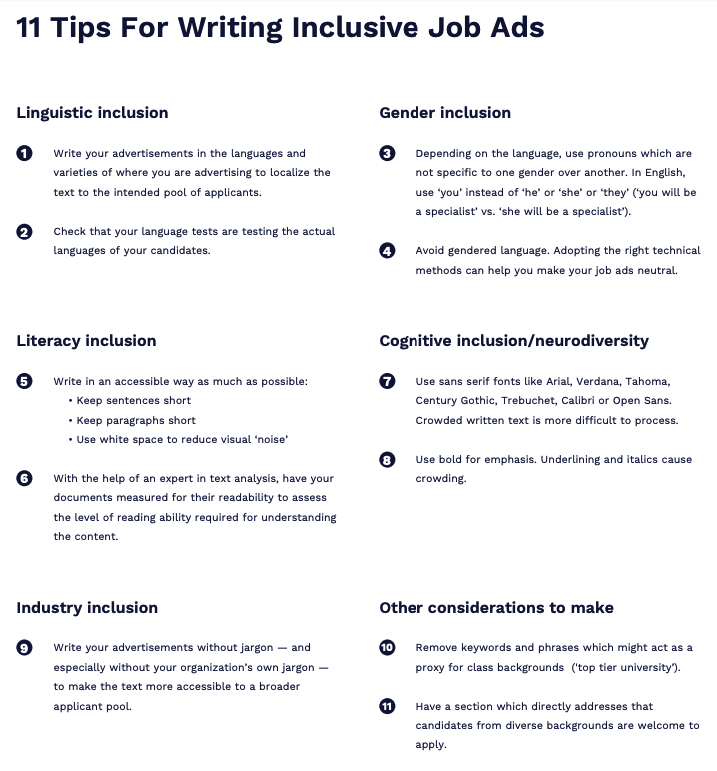
Here are 11 practical tips for writing inclusive job ads by Kyle Snyder. You can download the list here and listen to the Recruitment On The Go podcast episode with Kyle here.
2. Communicate your policy
One way to ensure that you have a fair hiring process is to communicate your policy to candidates upfront, so that they can hold you accountable.
Your EEO policy should go beyond just the statement in your job ad. Communicate to your candidates what your selection process is like, what tools you’re using, and how you’re overcoming bias in hiring and in the workplace.
3. Implement blind hiring practices
Do you really need women only in your HR department? Should your developers and coders just be male? Of course not, but these are biases that can be perpetuated because it’s ‘what’s always been done’.
By implementing principles of blind hiring you can ensure fair hiring practices are carried out and that the best people are hired for the roles you need filling. Blind hiring reduces bias by allowing interviewers and those responsible for making hiring decisions to put aside any preconceptions and keep their minds open to all hiring possibilities.
Blind hiring practices can include:
- Hiding demographic information when reviewing CVs.
- Hiding applicants’ names when evaluating work assignments.
- Avoiding social media pre-screening (using it later in your recruitment process).
The state of diversity recruiting in 2020
4. Establish clear selection criteria
When creating selection criteria for what the ideal candidate should be like, all the criteria must be job-related. And one of the simplest ways to start determining these criteria and ensure fair hiring practice is by recruiting based on values.
First figure out what core values your company has, and use them to guide you in your decision making. Translate these values into desired behaviors. I.e. if one of your core company values is integrity, determine what behaviors an employee with clear integrity displays. Write these behaviors into the job ad.
Then, carry out a thorough job analysis to determine what specific requirements in terms of behaviors, skills, and knowledge that are essential to performing the job well are, and use them alongside company values as your selection criteria.
Stop guessing,
Start data-driven hiring.
Learn how you implement a modern candidate selection process, that is: streamlined, experience-driven and backed by data.
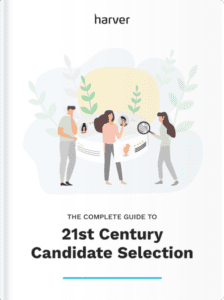
5. Focus on assessing the relevant skills and competencies
If you want to ensure fair hiring practice, assess all candidates for relevant job-related skills and competencies, rather than simply relying on their CV and your gut feeling.
For example, through cognitive ability assessments, situational judgement tests (SJTs), or personality questionnaires. These should always measure the skills, behaviors, and competencies that are your actual selection criteria.
Below you can see Harver’s library of pre-employment assessments. These are built not only to assess candidates on their skills and characteristics, but also to provide an informative, engaging application process that ensures a two-way matching.
When using pre-employment assessments, regularly check for adverse impact to make sure that your selection is fair. Also, educate yourself on algorithm bias. Your assessment provider should be able to provide you with information on how they’re mitigating against both adverse impact and algorithm bias.
If you’d like to see Harver’s pre-employment assessments in practice, you can book a demo below.
Ready to transform your hiring process?
6. Assemble diverse hiring panels
How do you ensure you have a diverse workplace? By following fair hiring practices, another one of which is assembling a diverse hiring panel. If ‘like attracts like’, then put diverse employees on the hiring panels and let them inspire the next generation of diverse employees to come work for you.
Implementing a diverse hiring panel will allow you to cast your net wider, systematically reducing unconscious bias in the hiring process.
Create a hiring policy that requires members of underrepresented groups to sit on every hiring panel. When involving your colleagues in the hiring process, provide training on unconscious bias and how to mitigate against it (more on that in point 7).
Like what you see?
Don’t miss out. Subscribe to our quarterly digest to get the latest TA and TM resources delivered right to your inbox.
7. Standardize your interviews
Invest in creating structured interview processes for your organization including standardizing your interview practice and questions.
If you want to eliminate bias from your hiring process, don’t allow interviewers to go off-script. One way to avoid putting yourself in a precarious or potentially discriminatory position is to have a pre-prepared set of questions that interviewers are required to ask of each candidate. Nothing more, nothing less.
Don’t allow anyone involved in interviewing candidates to deviate from this interview structure or the list of preapproved questions. It needs to be standard for all candidates who are applying for the same role.
Standardizing interviews and creating predetermined questions beforehand, and giving all candidates the exact amount of time to demonstrate or communicate their specific skill set and experience, is the best way to ensure fair hiring practices at your company.
8. Have a fair background checking process
By pre-screening or sifting out all candidates with a criminal history, you’re shutting yourself off from a large swathe of potential qualified candidates. In the US alone, 77 million people have a criminal record – but that doesn’t mean they’re all convicted criminals.
The FBI defines a criminal record as ANYONE who’s ever been arrested (even if they weren’t convicted), which means that you might be turning away top talent who committed a minor speeding offense.
How can you maintain fair hiring practices while also carrying out background checks?
- Don’t carry out a background check until the end of the recruitment process and an offer of employment has been made.
- When you do carry out background checks, comply with local laws.
- If a candidate has a conviction, review how it is relevant to the job you’re hiring for, or what risks, if any, are associated with the conviction.
- Ask for evidence of rehabilitation. As well as finding out how long it’s been since conviction/end of sentence, it’s worthwhile finding out what effort the candidate has made to move beyond the conviction and rehabilitate and improve their life since then.
- Take into consideration:
- The nature of the offense,
- The gravity of the offense,
- The length of time since the conviction, end of sentence,
- What the job itself entails.
- Cultivate a culture of inclusivity in your workplace. Proactively lead internal discussions about the benefits of hiring people with a criminal record.
- Create a company-wide policy about how you’re going to treat criminal records when hiring and make sure it is communicated from the top down to both existing employees and potential candidates.
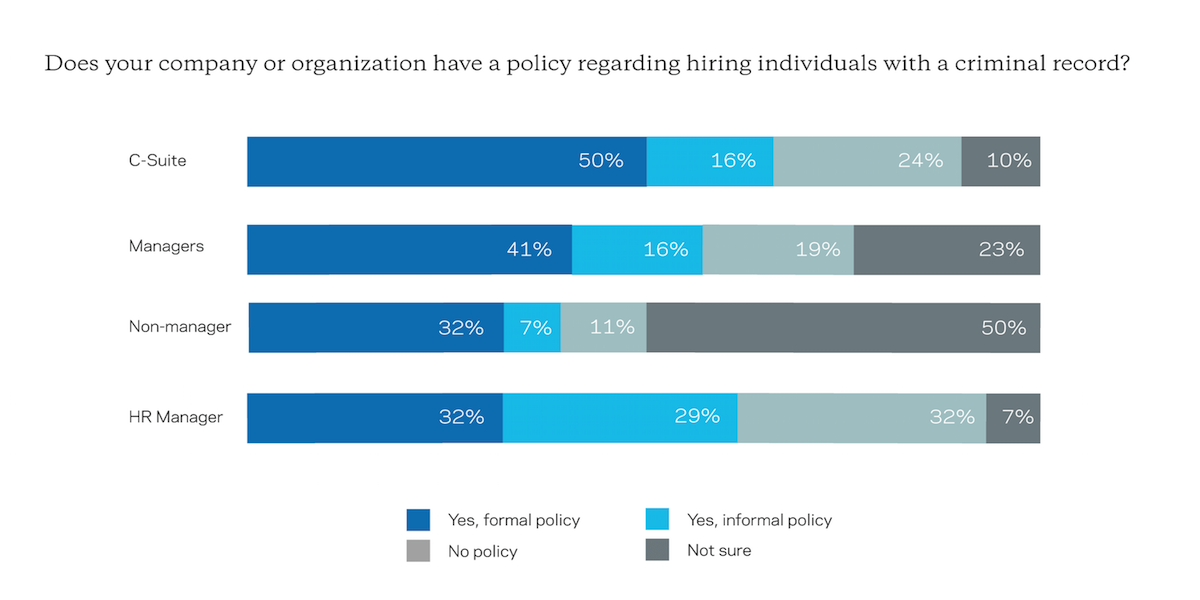
Many companies still have no formal policy on hiring people with a criminal record and even if they do, they don’t widely communicate it to their employees. Having a formal policy in place improves the legal defensibility of your recruitment process and also ensures it fairness.
9. Train interviewers
If you want to ensure that your interviewers are following fair hiring practices, make sure the first thing you do is train them properly on employment law, interview skills, inclusion, diversity, and bias.
Ensure that all interviewers are aware of the prevalence of unfair hiring in recruitment. Ignorance is never an excuse, not even if hiring managers are just starting out. Questions that should never be asked include:
- Age-related questions such as ‘When were you born?’ ‘When did you graduate?’ (unless you’re hiring for an age-related role such as serving alcohol, in which case asking for proof of ID is acceptable).
- Gender or marital status related questions such as ‘Do you have children?’, ‘Do you plan on having children?’, ‘What is your childcare situation?’, ‘Are you pregnant?’. The only time an employee (not an applicant) is obliged to tell their employer they’re pregnant is at least 15 weeks before the baby is due.
- Citizenship, ethnicity, race, or religious related questions such as ‘Where were you born?’, ‘What religion do you follow?’
Essentially, if the question you’re about to ask doesn’t relate to the role you’re hiring for, don’t ask it.
Also, train all interviewers to take notes throughout the duration of their interviews as well as maintain selection records. The hiring official should then retain all notes pertaining to the application, interview, and selection process in a secure location for a minimum of two years. All of these will be evidence that you’re following fair hiring practices. In fact, in the US, failure to retain these selection records violates 29 C.F.R. §1602.14.
A final word
Continuously monitor your hiring practices to make sure that your process is fair to all applicants. Track what candidates you’re attracting and who you’re hiring and if there are any inconsistencies – it could indicate adverse impact.
Remember that by ensuring fair hiring practices, you’re not only recruiting in an inclusive way but you’re also improving the performance of your organization.
The state of diversity recruiting in 2020

